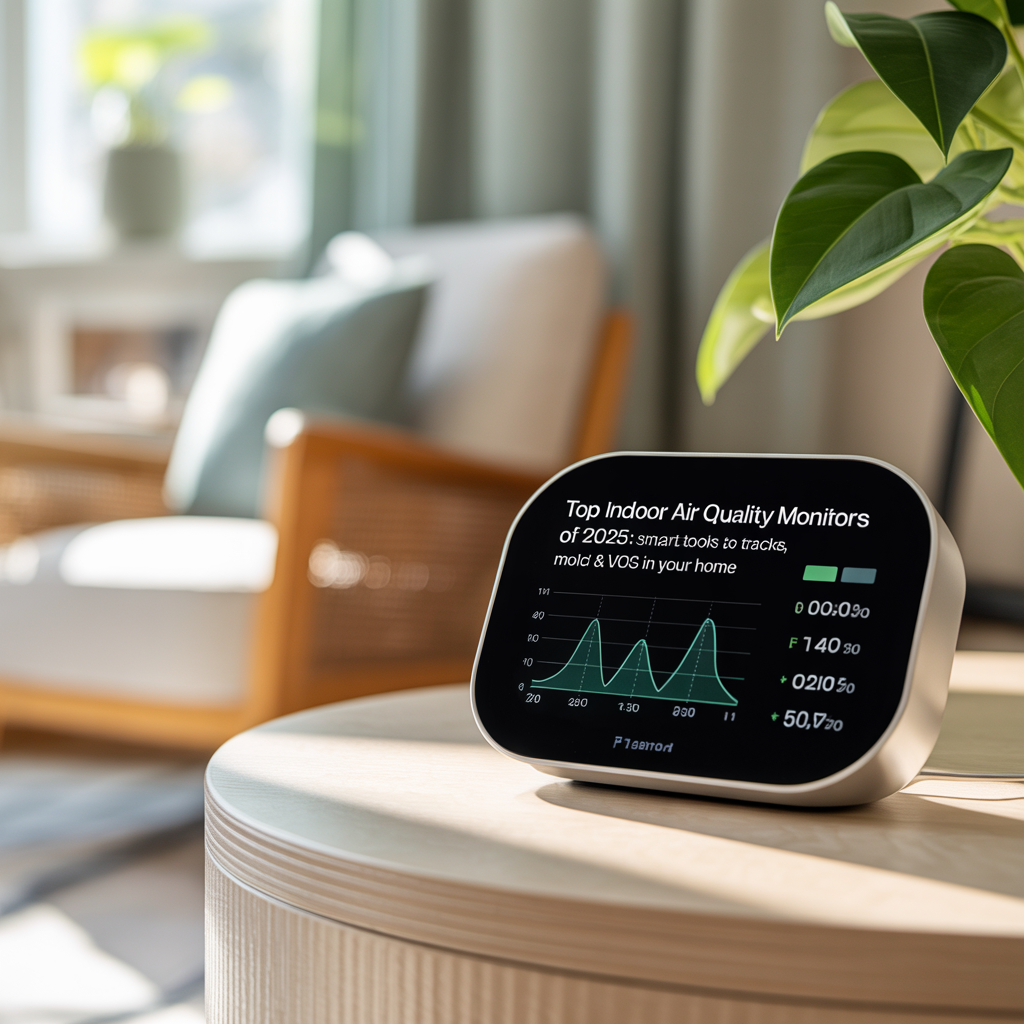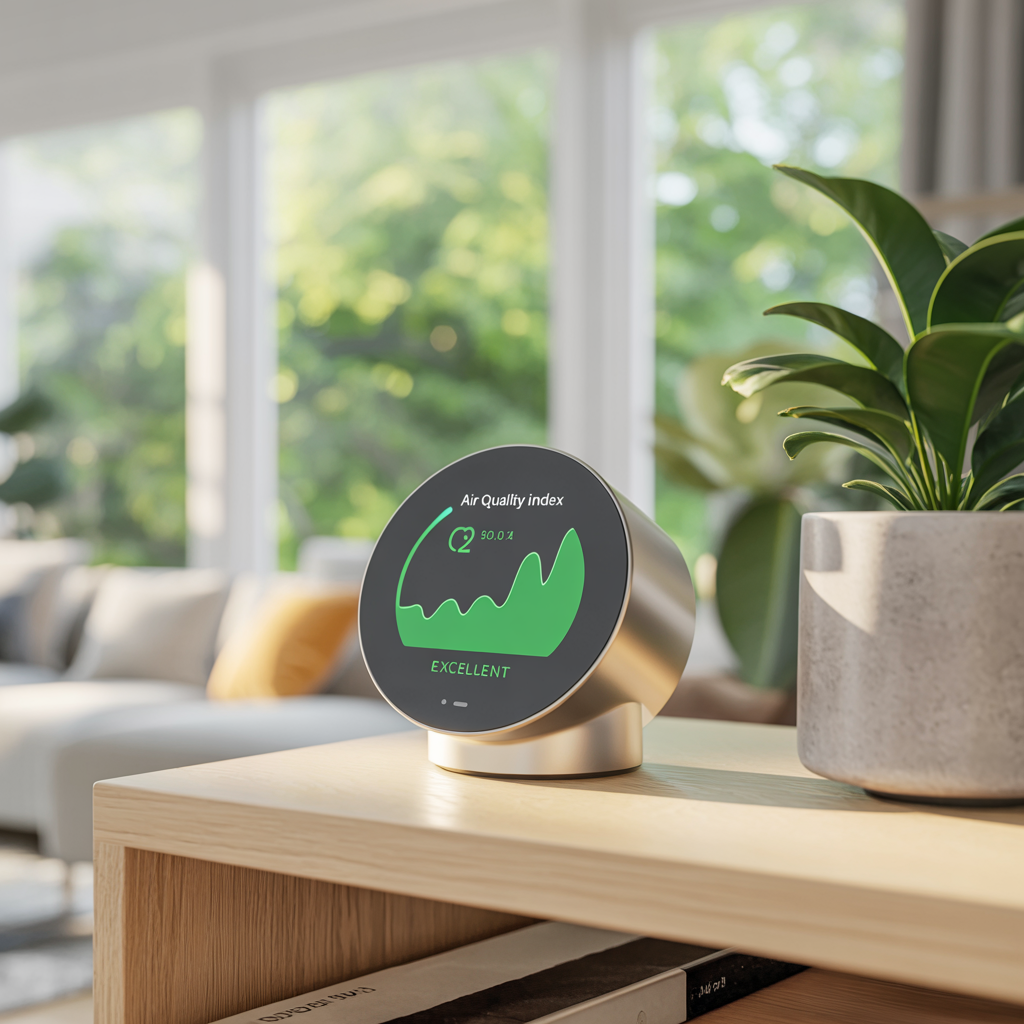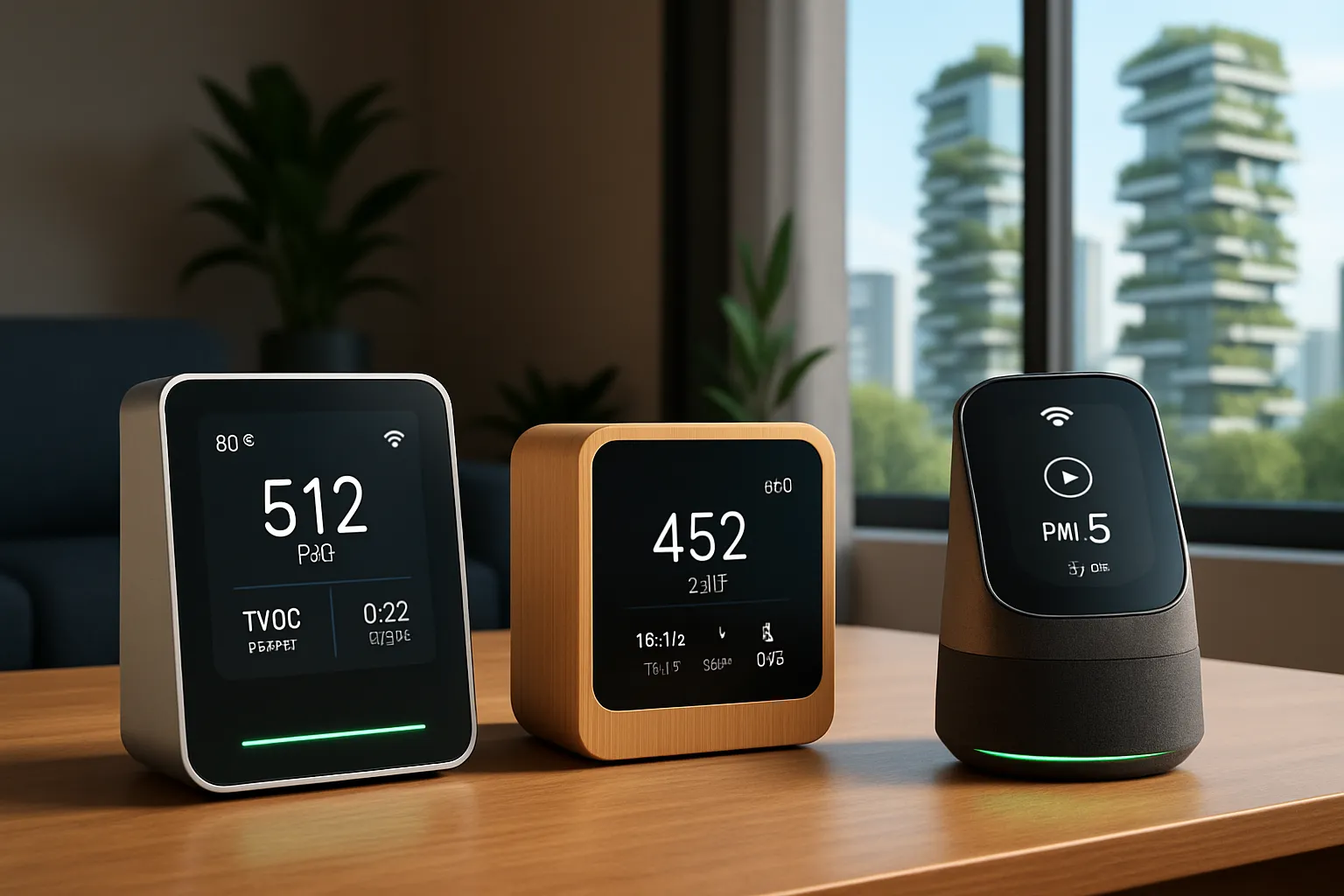
Confession: I used to think air quality monitors were overkill. But then came wildfire season, working from home, and a persistent cough my doctor called ‘urban lung.’ Turns out, the air inside my supposedly safe home could be stealthily sabotaging my focus, sleep, and family’s health. Let’s decode why 2025 could be the year indoor air quality goes mainstream—and how a jumble of invisible particles became my latest obsession.
- Invisible Threats: Why You Can't Ignore Indoor Air Quality Anymore
- My Wishlist for a Future-Proof Air Quality Monitor (Beyond Basic Gadgets)
- Playing Favorites: My Take on 2025's Top Indoor Air Quality Monitors
- Oddball Uses (And Unexpected Perks) of an Air Quality Monitor
- Quick Wins: Everyday Tricks for Cleaner Indoor Air (My 'Shortcut List')
Invisible Threats: Why You Can’t Ignore Indoor Air Quality Anymore
I used to think fresh air was just about opening a window. Then I discovered something that completely changed how I view my home environment: indoor air can be 2 to 5 times more polluted than outdoor air. That statistic hit me hard, especially considering we spend up to 90% of our time indoors.
The pandemic shifted everything. Work-from-home became the norm, kids spent more time indoors, and suddenly our homes transformed into our entire world. But here’s what I didn’t expect—this increased indoor time exposed us to a cocktail of indoor air pollution that most of us never even knew existed.
The Hidden Culprits in Your Home
Research shows that indoor air pollution ranks among the top five environmental health risks. The main threats lurking in our homes include:
- PM2.5 particles from cooking, candles, and outdoor pollution seeping indoors
- VOCs (volatile organic compounds) from furniture, paint, cleaning products, and synthetic materials
- CO2 buildup from poor ventilation—especially problematic in modern, sealed homes
- Formaldehyde and mold spores that can trigger serious health issues
What really opened my eyes was learning how wildfires now infiltrate our homes. Even with windows closed, that smoke finds its way in. The health benefits of air quality monitoring became crystal clear when I realized my occasional headaches and poor sleep might not be stress-related at all.
Why Your Family Needs Protection
High CO2 levels can impair focus and sleep quality—something I never connected before getting a CO2 sensor. Babies, pets, and anyone with respiratory sensitivities face the greatest risks from these invisible threats.
Minor symptoms like headaches, asthma flare-ups, or restless nights? Indoor air pollution may be the culprit, even when you can’t see or smell anything wrong. The synthetic materials in our modern homes constantly off-gas chemicals that accumulate over time.
“Effective air quality monitors form the invisible defense line that modern homes desperately need.” – Dr. Lara Chen, Environmental Health Specialist
Understanding the importance of indoor air quality isn’t just about comfort—it’s about protecting your family’s long-term health. Once I grasped how these pollutants affect everything from cognitive function to respiratory health, investing in proper monitoring became a no-brainer.

My Wishlist for a Future-Proof Air Quality Monitor (Beyond Basic Gadgets)
After months of research and testing, I’ve learned that not all air quality monitor features are created equal. Some are absolute must-haves, while others are nice-to-have bonuses that can make or break your monitoring experience.
The Non-Negotiables
First up: a reliable PM2.5 monitor is essential. These fine particles—smaller than dust you can see—penetrate deep into your lungs and bloodstream. Research shows PM2.5 particles contribute to heart disease and asthma, making this sensor non-negotiable for any serious air quality setup.
Next, I absolutely need a VOC sensor. Volatile organic compounds lurk everywhere—from that new couch to cleaning supplies under the kitchen sink. These chemicals cause headaches and nausea, but you can’t smell most of them. A good VOC detector catches these invisible threats before they impact your health.
The third must-have? A CO2 meter. This became crystal clear during my makeshift home office days. High carbon dioxide levels cause fatigue and brain fog—exactly what you don’t want during important video calls or deep work sessions.
The Bonus Features Worth Having
Mold risk alerts deserve serious consideration. These smart air quality sensors monitor humidity levels and warn you before mold becomes a problem. Trust me, prevention beats remediation every time.
For anxiety-prone tinkerers like myself, WiFi connectivity and app integration transform monitoring from guesswork into data-driven decisions. Real-time monitoring through smartphone apps turns air quality into a daily wellness check-in. As home tech reviewer Priya M notes,
“Data is only empowering if it’s accessible—modern monitors make air quality tangible.”
Power and Portability Considerations
Here’s where things get interesting. Battery-powered monitors suddenly matter when you’re checking that stuffy basement, testing air quality in your RV, or investigating mysterious odors in the attic. Plug-in models work great for permanent bedroom or office setups, but portability opens up whole new monitoring possibilities.
By 2025, effective monitors combine multiple sensors with smart integrations as standard features. The best devices now track PM1, PM2.5, PM10, VOCs, CO2, and even radon—all while syncing with voice assistants and providing color-coded visual feedback.
The key is finding a monitor that grows with your needs rather than becoming obsolete in two years.

Playing Favorites: My Take on 2025’s Top Indoor Air Quality Monitors
After testing dozens of air quality monitors over the past year, I’ve narrowed down my favorites to three standout devices. Each one serves a different type of user, and honestly, I kept flip-flopping between feature-packed and budget-friendly—until I realized the real investment is peace of mind.
Airthings View Plus: The Versatile Champion
This is my go-to recommendation for most people. The Airthings View Plus tackles the big four pollutants that matter most: radon, VOCs, PM2.5, and CO2. What sets it apart is the flexibility—you can use it battery-powered for portable monitoring or keep it plugged in at your desk.
The app integration is solid, giving you historical data and trends that help you connect air quality patterns to your daily activities. Research shows that portable air quality monitors are gaining popularity, especially among families and biohackers, and this device nails that sweet spot.
uHoo Smart Air Monitor: The Tech Enthusiast’s Dream
If you’re the type who loves diving deep into data, the uHoo’s 9-in-1 sensor array will keep you busy. It measures everything from the basics to formaldehyde—something rare in consumer monitors. The smart alerts and IFTTT integration mean you can automate your entire home’s response to air quality changes.
I’ve found this particularly appealing to biohackers optimizing their environment. The formaldehyde detection alone makes it worth considering if you’ve got new furniture or recent renovations.
IQAir AirVisual Pro: The Data Nerd’s Choice
This is my pick for stubborn data nerds who want real-time AQI readings with weather data integration. The display is crisp, the readings are precise, and the app connectivity gives you professional-grade insights without the professional price tag.
What I love most is how it presents complex air quality data in an instantly understandable format. The real-time AQI feature has become essential for anyone in wildfire zones or high-pollution areas.
The monitoring capabilities have expanded significantly in 2025. Where older devices might track just PM2.5 and temperature, these smart air quality sensors for home use now offer comprehensive pollutant detection with real-time interpretation. Product designs range from minimalist aesthetics to professional-grade meters, giving you options that match both your needs and your space.

Oddball Uses (And Unexpected Perks) of an Air Quality Monitor
Here’s the thing about air quality monitors – they’re like having a detective in your house, and sometimes they catch the most unexpected culprits. I’ve discovered that these portable air quality monitors shine in places you’d never think to check.
Take my kitchen disaster last month. I was attempting some “experimental stir fry” (translation: I burned everything), and my real-time air pollution tracker started screaming before my smoke detector even noticed. The PM2.5 readings shot through the roof, giving me hard data on just how much particulate matter my cooking “skills” were pumping into the air. Now I keep a monitor on my kitchen counter permanently.
But the real game-changer happened during wildfire season. I mounted a CO2 sensor on my car dashboard, turning my vehicle into a mobile air quality control center. Research shows that portable use opens up new ways to improve air everywhere – not just at home. When the PM2.5 levels spiked to dangerous levels during my commute, I could make real-time decisions about whether to roll up windows or take alternate routes.
The biggest surprise? My kids’ playroom. I placed a monitor there on a whim and discovered something shocking – those plastic LEGO bins were off-gassing enough VOCs to trigger alerts. That led to an immediate nighttime LEGO ban and a switch to wooden storage boxes. Who knew that awareness could create such immediate routine changes?
These smart home air quality solutions have taught me that placement impacts data accuracy more than I expected. Spot checks reveal hidden issues in overlooked spaces. During one heated Monopoly game evening, my CO2 meter revealed 1,200+ ppm – apparently, competitive board games create their own atmospheric conditions.
‘There’s something geekily satisfying about catching environmental culprits red-handed.’
Even stranger discoveries: CO2 spikes during family movie nights when we’re all crammed together, or when too many plants share a room with you at night. My monitor caught the subtle shift when our bedroom fern was actually competing with us for oxygen in the dark hours.
The beauty of modern air quality monitors is their flexibility. They’re not just stationary devices anymore – they’re portable problem-solvers that help you understand your environment in ways you never imagined.
Quick Wins: Everyday Tricks for Cleaner Indoor Air (My ‘Shortcut List’)
After months of tracking my home’s air quality, I’ve discovered that indoor air quality tips for families don’t have to be complicated. Research shows that multiple small changes can dramatically improve indoor air quality, and honestly, the simple tricks work best.
I started cracking windows at odd hours for cross-ventilation—especially post-cooking or cleaning. It sounds basic, but those ten minutes after frying fish or using bathroom cleaner make a huge difference. My air quality monitor showed immediate drops in volatile organic compounds VOCs when I got strategic about fresh air flow.
The HEPA purifier in high-traffic rooms was a nerdy splurge that paid off with fewer allergy mornings. HEPA filters capture airborne PM2.5 and fine dust particles that were triggering my family’s symptoms. For anyone dealing with air quality monitors for asthma, this investment pays for itself in better sleep and clearer breathing.
Ditching scented candles and air fresheners actually made my home smell… less artificial and more ‘alive’. I didn’t realize how much synthetic fragrance was masking rather than solving odor issues. Products with heavy chemical content were adding to our VOC load instead of helping.
Swapping to non-toxic cleaners was a learning curve, but worth it for my (and my pets’) lungs. Certain houseplants can reduce VOC levels by up to 70% according to studies, so I added spider plants and peace lilies to rooms where we spend the most time.
Humidity control between 40-60% became my obsession after seeing how it affected everything from dust mites to mold prevention. A simple hygrometer showed me our basement was sitting at 70% humidity—no wonder we had that musty smell.
‘Every little hack adds up—true for fitness, true for breathing easy.’
The health benefits of air quality monitoring go beyond just numbers on a screen. Real-time monitoring plus proactive habits equals the best results I’ve seen. These air quality tips for families work because they’re sustainable changes, not major overhauls.
What surprised me most? Small, consistent actions created bigger improvements than any single expensive solution. Opening windows strategically, controlling humidity, and choosing products without synthetic fragrances—these everyday choices stack up to create genuinely cleaner indoor air that you can feel, not just measure.
TL;DR: The best indoor air quality monitors of 2025 offer smart, real-time tracking for toxins, VOCs, CO2, and mold. Investing in one is a small step for cleaner air and healthier living—whatever your reason for caring.


